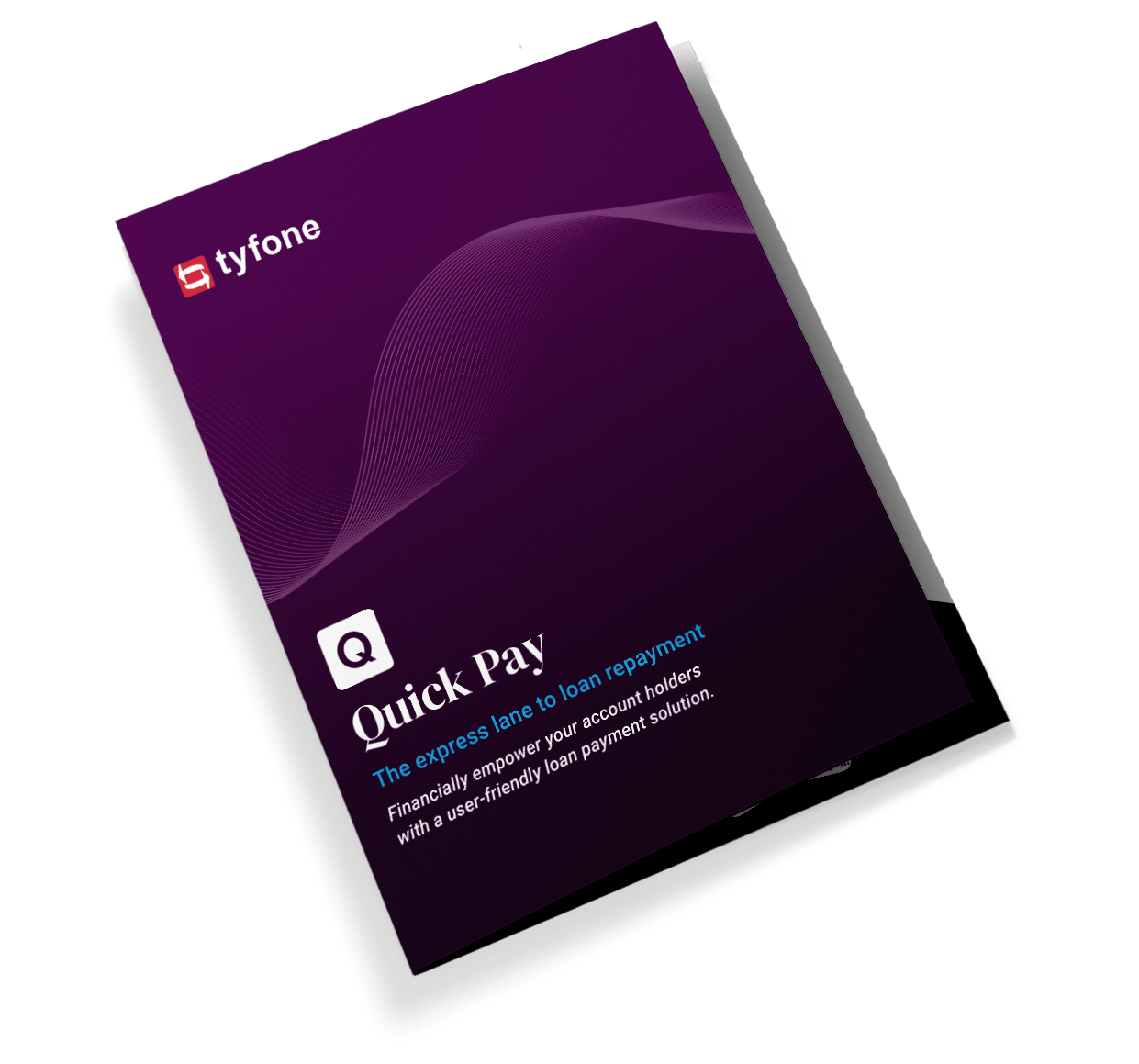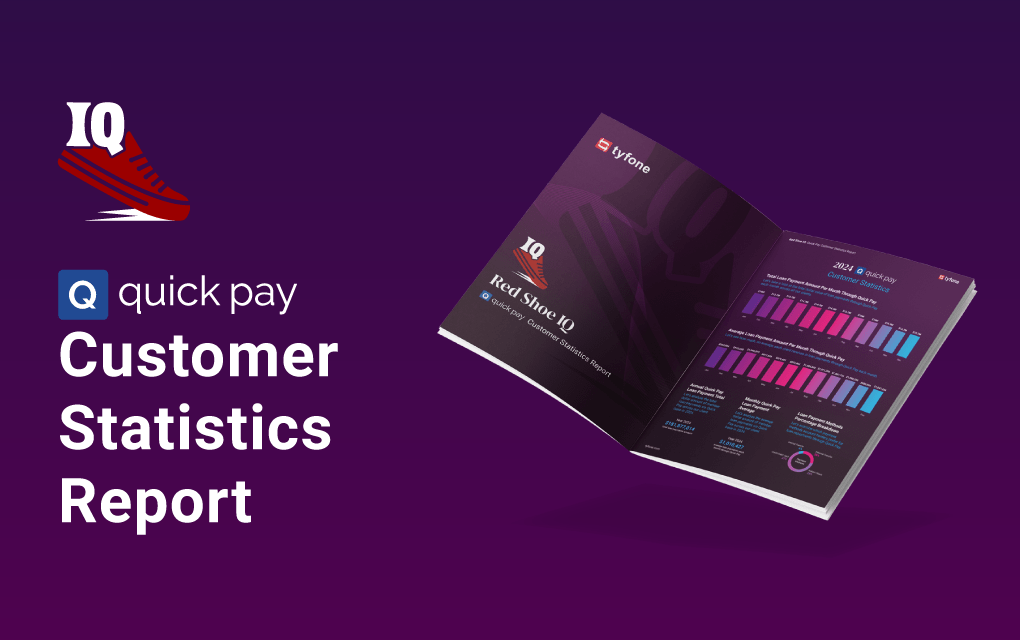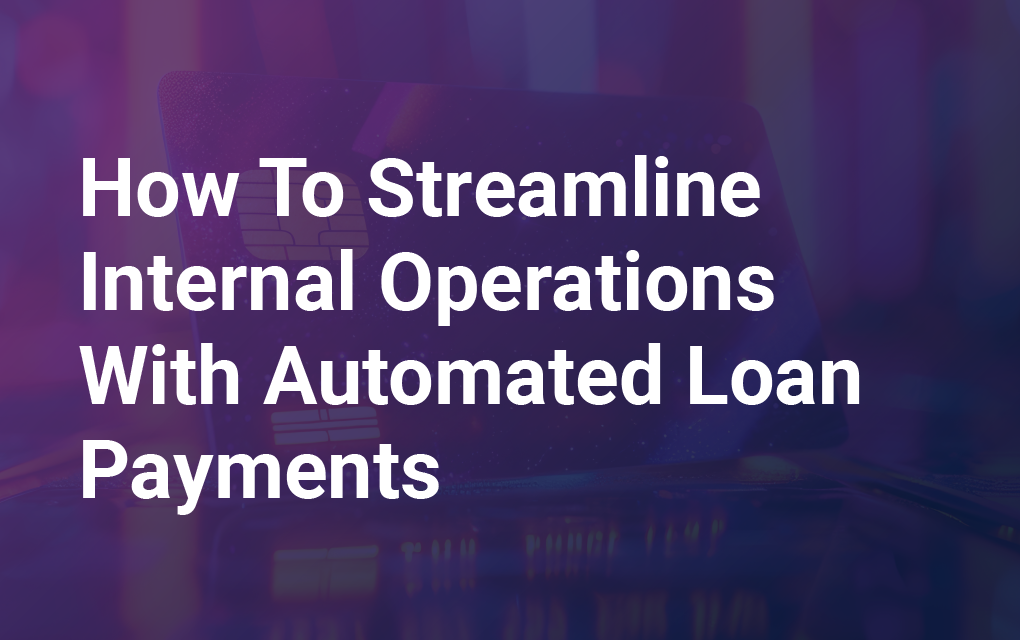How To Streamline Internal Operations With Automated Loan Payments
Implementing automated loan payment systems in financial institutions streamlines internal operations, enhances employee productivity, and improves job satisfaction. Automation reduces errors, fosters teamwork, and allows staff to focus on higher-value tasks, ultimately boosting overall efficiency and customer satisfaction.
Today, the efficiency and satisfaction of your staff are critical to the overall success of your organization. Ensuring that your employees are working in an environment that promotes productivity and job satisfaction can lead to significant improvements in business performance.
One great way for your financial institution to achieve this is by implementing automated loan payment systems. While the primary benefits of such automation might initially appear to be member-centric, the positive impact on your staff should not be underestimated.
Automated loan payments streamline various internal processes, reduce the burden of repetitive tasks, and enhance the accuracy of financial transactions. This not only leads to happier members, but also creates a more supportive and efficient workplace for employees.
Here’s a comprehensive guide on how to streamline your internal operations with automated loan payments.
The Benefits Of Automated Loan Payments
Implementing automated loan payments not only benefits customers but also significantly enhances the working conditions and productivity of your employees. There are key advantages that your staff can enjoy from this automation.
Efficiency
Automated loan payment solutions reduce reliance on manual labor, which in turn reduce operational expenses. By streamlining processes, your financial institution can minimize errors that could result in costly rectifications and delays. Additionally, automated processing guarantees uniform and accurate handling of loan payments.
Job Satisfaction
Automation in loan payment processes enables employees to engage in more challenging and rewarding tasks that better utilize their skills and talents, leading to greater job satisfaction and career growth. Additionally, automation reduces the stress associated with manual data entry and the constant pressure to avoid errors. This smoother workflow contributes to a more pleasant work environment, enhancing overall employee well-being and productivity.
Customer Service
With automated systems handling repetitive tasks, staff can respond to inquiries from your members more quickly and efficiently, enhancing satisfaction and loyalty. Additionally, automation ensures that payments are processed consistently and reliably, which reduces the number of complaints from your account holders. This not only improves service quality but also allows employees to focus on delivering a superior experience.
Teamwork
Staff can collaborate more effectively on projects that require collective effort and brainstorming, fostering a team-oriented culture. Additionally, automated loan payments often necessitate integration with other departments such as IT, finance, and customer service, promoting interdepartmental communication. This synergy fosters organizational efficiency and helps build a more cohesive work environment.

FREE PAMPHLET
Our Quick Pay solution simplifies loan repayments by allowing account holders to pay any loan, through any method, from any location without needing login credentials. It integrates with any digital banking system, provides 100% self-service, and posts loans in real-time. Quick Pay also reduces operational costs and saves staff thousands of hours by automating loan processing, making it an efficient and flexible tool for financial institutions.
Choosing The Right Solution For Your Needs
Selecting the right solution for your financial institution is critical for the successful implementation of automated loan payments, as it can greatly impact the efficiency and effectiveness of your financial operations.
When selecting software, it is important to look for solutions that offer robust integration capabilities, ensuring that the software can seamlessly integrate with your existing financial systems to create a cohesive and streamlined workflow.
Additionally, a user-friendly interface is vital, as it ensures that the software is easy to use and requires minimal training, enabling your staff to quickly adapt to the new system without a steep learning curve. Security features are another critical consideration; ensure the software includes robust security measures to protect sensitive financial data and comply with regulatory requirements.
Last but not least, the ability to customize the solution to meet your specific business needs is essential, as it allows you to tailor the system to fit your unique processes and requirements, ultimately enhancing the overall efficiency of your automated loan payment system and helping you deliver an optimized experience to your members.
Setting Up Automated Loan Payments
Setting up automated loan payments involves a structured process to ensure smooth implementation.
First, assess your current loan payment process to identify any bottlenecks or inefficiencies that automation could address. Clearly define your objectives for automation, such as reducing processing time and minimizing human errors, to guide your implementation strategy.
Next, select a software solution that aligns with your institution’s requirements and budgetary considerations. Ensure thorough data migration from existing systems to the new solution, prioritizing accuracy and completeness of transferred loan data.
Configure the automated system by setting up rules and workflows in accordance with your business policies and regulatory requirements. Conduct comprehensive testing to validate the system’s functionality and identify any potential issues before deployment.
Provide adequate training for your team to familiarize them with the new system and its operations, ensuring a smooth transition and effective utilization of the automated processes. Finally, launch the new solution and monitor its performance to address any operational adjustments or optimization needs. This structured approach ensures that automated loan payments are implemented successfully, enhancing operational efficiency and member satisfaction.
Focusing On Optimization
After implementing the automated loan payment solution, ongoing optimization plays an important role in maintaining its effectiveness. Regular audits are fundamental to verify the system’s functionality and identify any potential issues early on. These audits not only help in ensuring compliance with internal standards but also contribute to enhancing system reliability and performance.
Tracking a comprehensive set of performance metrics is equally important. Key performance indicators (KPIs) such as payment processing time, error rates, and end-user satisfaction provide quantitative insights into how well the system is performing. Analyzing these metrics allows you to pinpoint areas for improvement and optimize processes to streamline operations and enhance service delivery.
Additionally, establishing a robust feedback loop is essential for gathering qualitative insights from both staff and members. This feedback loop creates a mechanism for continuous improvement by listening to suggestions, addressing concerns, and implementing enhancements based on real-world user experiences. By actively engaging with stakeholders through surveys, focus groups, or direct interactions, you can ensure that the automated system remains responsive to user needs and expectations.
Furthermore, leveraging reporting capabilities enables deeper analysis of trends and patterns within the automated system. This data-driven approach not only facilitates informed decision-making but also supports proactive adjustments to optimize system performance over time.
Addressing Challenges
Addressing common challenges that accompany automation helps maximize its benefits and ensure sustained operational efficiency. One of the biggest concerns is data security, where protocols must be established to protect sensitive information from potential breaches and unauthorized access.
Another aspect to keep in mind is preparing for system downtime. Despite the reliability of automated loan payment systems, occasional disruptions can occur due to technical issues or maintenance. Developing a contingency plan helps mitigate the impact of such downtime, ensuring minimal disruption to service and maintaining end-user satisfaction.
Compliance with regulatory requirements is equally important. Automated loan payment systems must adhere to regulations governing data privacy, financial transactions, and consumer protection. Staying informed on regulatory changes ensures that automated processes remain compliant through regular audits and updates.
Last, developing a culture of improvement and adaptation is key. This involves not only addressing current challenges but also anticipating future needs and technological advancements. By investing in ongoing training for staff, staying updated on emerging technologies, and fostering collaboration across departments, organizations can proactively address challenges, optimize automated processes, and leverage automation to its fullest potential.
Gathering Feedback & Testimonials
Highlighting success stories from members who have successfully used your automated loan payment solution can offer invaluable insights and inspiration. These real-world examples not only showcase the practical application of automation but also provide a roadmap of challenges encountered, solutions implemented, and the tangible benefits realized.
By sharing comprehensive stories and detailed metrics showcasing how various members have successfully utilized your automated loan payment solution to enhance their financial wellness, you can significantly improve understanding among other members regarding the transformative capabilities of automation. These real-world examples not only highlight the practical benefits and outcomes achieved, such as improved financial management and reduced stress, but also serve as compelling testimonials that increase confidence and trust in your institution’s offerings.
This approach also encourages higher adoption rates among current and prospective members. By showcasing concrete evidence of success through metrics like reduced processing times, lower error rates, and increased member satisfaction, you demonstrate the tangible advantages of embracing automation. Moreover, by demonstrating your institution’s commitment to innovation, you cultivate future loyalty among members, positioning your institution as a leader in providing advanced financial services.
If you’re seeking a modern and user-friendly loan payment solution, consider our Quick Pay product; It could be the perfect fit for your requirements.
Our digital banking-agnostic solution offers a wide range of payment methods, including credit cards, debit cards, eCheck, ACH, internal accounts, and PayPal. This diverse array of options ensures unprecedented convenience for your members, enhancing their payment experience significantly.




